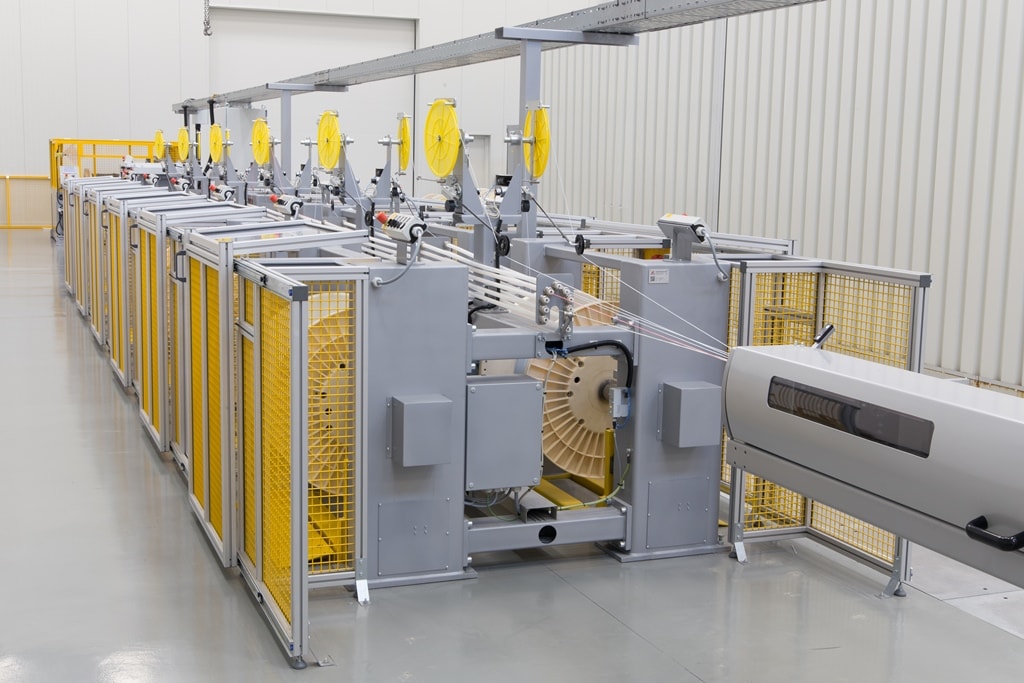News
Unleashing the Power of Fibre Optic Cabling:
From Sand to Speed the Intricate Art of Crafting Fibre Optic Cables.
Fibre optic cables used in the telecommunications industry are made through a process that involves several steps. Here's a general overview of the process:
Preparing the Glass Fibre: The core of a fibre optic cable is typically made from silica glass. This glass is highly pure to minimize signal loss as light passes through it. The glass is produced by melting high-purity silica in a furnace and then drawing it into very thin strands called preforms.
Drawing the Preform: The preform, a thick glass rod, is heated and stretched using a process called "fibre drawing." This process involves pulling the preform at a controlled rate to create a thin, continuous strand of glass fibre. The diameter of this fibre can be as thin as a human hair.
Coating: The drawn glass fibre is extremely fragile and vulnerable to damage. To protect it and enhance its optical properties, a coating is applied. This coating is typically made of a UV-cured acrylate material. The coated fibre is referred to as an optical fibre.
Buffering: Optical fibres are often further protected with additional layers of material known as buffers or jackets. These layers provide additional mechanical protection, thermal stability, and resistance to environmental factors. The buffered fibre is more rugged and suitable for installation.
Stranding and Cabling: To create a functional fibre optic cable, multiple optical fibres are bundled together. These fibres may be color-coded to differentiate them. The bundle of fibres is typically wrapped with strength members for mechanical reinforcement. These strength members are often made from materials like aramid fibres or fiberglass.
Adding Additional Layers: Depending on the application, additional layers may be added to the cable for moisture resistance, flame retardance, and protection against physical damage. These layers can include water-blocking materials, metal or plastic shielding, and an outer jacket.
Testing: Throughout the manufacturing process, the optical fibres and the final cable are rigorously tested for quality. This involves measuring factors such as signal loss (attenuation), bandwidth, and other optical parameters to ensure that the cable meets industry standards.
Termination: Once the fibre optic cable is manufactured, it needs to be terminated to be usable. Termination involves attaching connectors to the ends of the fibres, which allows them to be connected to other cables, devices, or network equipment.
The manufacturing process of fibre optic cables is precise and involves various technical steps to ensure high-quality and reliable communication performance.

"Racing Information the Breakneck Speeds of Fibre Optic Data Travel"
Fibre optics is a technology that uses thin strands of glass or plastic called optical fibres to transmit data using light signals. These optical fibres are designed to guide light through their core using a principle called total internal reflection, allowing the light to travel long distances without significant loss of signal strength. When we talk about fibre optics "travelling at the speed of light," we are referring to the speed at which the light signals propagate through these fibres.
The optical fibre consists of a core (where the light travels) surrounded by a cladding layer that reflects the light back into the core through total internal reflection. This design ensures that the light remains trapped within the core, allowing it to travel long distances.
The speed of light in a vacuum is approximately 299,792,458 meters per second (about 186,282 miles per second). However, in a material like glass or plastic, the speed of light is slightly slower due to the interaction of light with the atoms in the material. This speed is still incredibly fast, though, and it's typically around 200,000,000 to 225,000,000 metres per second (about 124,000 to 140,000 miles per second) in fibre optic cables.
It's important to note that while the light signals in fibre optics travel very close to the speed of light, the overall speed of data transmission is influenced by factors such as the distance the light needs to travel, the quality of the optical fibre, and any signal processing delays introduced by the equipment.
In summary, fibre optics technology leverages the high-speed transmission of light through optical fibres to enable rapid and efficient communication over long distances, making it a crucial component of modern telecommunications networks.
Layman’s Terms – its bloody fast!






